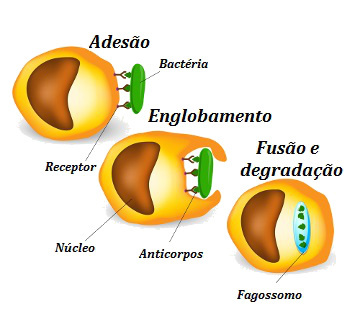Metabolism is the set of chemical reactions that take place in the cell and allow it to stay alive, grow and divide.
In summary, we can say that metabolism refers to all the biochemical processes of building and breaking molecules that take place in organisms.
Metabolism Steps
Metabolism only takes place inside cells and can be divided into two stages: catabolism and anabolism.
catabolism
Catabolism is a set of enzymatic degradation reactions, in which high molecular weight organic compounds are converted into simpler molecules.
In this process, energy release, one part being conserved in high energy molecules (ATP) and the other part dissipated in the form of heat.
Example: Breakdown of glucose and proteins.
Anabolism
Anabolism is a set of enzymatic reactions ofsynthesis, where simple molecules give rise to higher molecular weight organic compounds.
In the process there are expense of energy, which is stored in the ATP molecule.
Example: Protein synthesis from amino acids.
know more about Anabolism and Catabolism.
Basal Metabolism
Basal metabolism corresponds to the minimum amount of energy needed by the body at rest to maintain its vital activities within a 24-hour period.
Each individual has a basal metabolism rate, according to sex, age, weight, height and activities performed.
There are still the terms fast metabolism and slow metabolism related to the fact of losing and gaining weight.
The fact that metabolism is faster or slower is influenced by genetic factors and lifestyle habits of each individual.
People with fast metabolism tend to burn calories faster, making it harder to gain weight.
Meanwhile, people with slow metabolisms tend to accumulate more calories, making weight loss difficult.
Also read about Cell Metabolism.
Functions of Metabolism
The main functions of metabolism are:
- Obtain chemical energy from fuel molecules or absorbed sunlight;
- Convert exogenous nutrients into building blocks (primary monomers) or precursors of macromolecular components of cells;
- Form and degrade biomolecules required for specialized cell functions.
Main metabolic pathways of the human being
O energy metabolism of humans occurs through a complex interaction between various biochemical processes. The main ones are:
- Glycolysis: Oxidation of glucose to obtain ATP;
- Krebs Cycle: Oxidation of acetyl-CoA for energy;
- Oxidative Phosphorylation: Using the energy released in the oxidation of glucose and acetyl-CoA to produce ATP;
- Pentose-phosphate pathway: Synthesis of pentoses and obtaining reducing power for anabolic reactions;
- Urea cycle: NH Elimination4(ammonia) in less toxic forms;
- Oxidation of fatty acids: Transformation of fatty acids into acetyl-CoA, for later use by the Krebs cycle;
- Gluconeogenesis: Synthesis of glucose from smaller molecules for later use by the brain.
Learn more, read also:
- Biochemistry
- Physiology
- Characteristics of Living Beings


